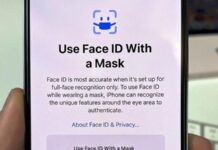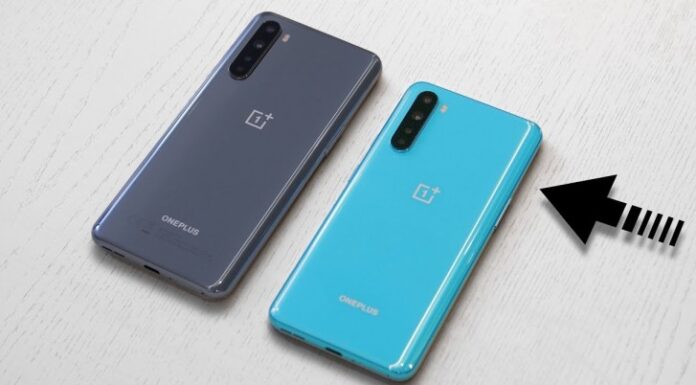We show you how to take a screenshot on a Mac
There will eventually come a time when you’ll need to know how to take a screenshot on a Mac. You might need it now. But, trust us; even if all you’re doing on your Apple laptop or Mac is streaming your favorite shows and video calling family and friends, this simple skill will come in handy someday.
Luckily, taking a screenshot on macOS Big Sur is an easy and seamless process. Better yet, it comes in various forms and options, from taking a screen capture of the entire screen to screen grabbing a portion of it or an open window. Taking a video recording of your screen is also possible using the same versatile tool. You can even annotate your screenshots before sharing them.
So, let us show you exactly how to take a screenshot on a Mac. We’ll show you exactly what makes the macOS’ Screenshot tool tick and how to use it to your full advantage.
1. Using the Screenshot tool
There are different ways to bring up the macOS Screenshot tool. On every Mac, you can press the ‘Shift’ + ‘Command’ + ‘5’ keys or launch the Screenshot tool through Launchpad. On compatible MacBook Pro models, you can also use Touch Bar.
There are five actions in the Screenshot tool. These actions include capturing the entire screen, capturing a window, or capturing a portion of the screen for screenshots. For video recording, the choices are to record the entire screen or recording a portion of the screen.
To start a screenshot or screen recording:
- For the entire screen or a portion of it: Click ‘Capture’.
- For a window: Move the cursor to the window, then click the window.
- For recordings: Click ‘Record’. To stop recording, click the ‘Stop Recording’ button in the menu bar.
2. Screenshot options
Click ‘Options’ on the Screenshot tool to bring up additional settings. The available options differ depending on whether you’re taking a screenshot or a screen recording. Among the options are where to save the file and whether to add a timed delay. You can also add the ability to show mouse pointers or clicks in the screenshot or video recording.
Additionally, when activated, the ‘Show Floating Thumbnail’ option temporarily floats a thumbnail of the completed screenshot or video clip at the bottom-right corner of the screen. You have a few seconds to drag this thumbnail into a document, mark it up, or share it.
Thumbnail options include:
- Swipe right to save the file immediately and make it disappear.
- Drag the thumbnail into a document, an email, a note, or a Finder window.
- Click the thumbnail to open a window where you can mark up the screenshot or trim the recording, or share it.
3. Taking screenshots with keyboard shortcuts
You can also take a screenshot or record video using keyboard shortcuts in macOS Big Sur. These shortcuts are used instead of the point and click method noted above.
The available keyboard shortcuts include actions to capture the entire screen, capture a portion of the screen, capture a window or the menu bar, or capture a menu and menu items. You can also use keyboard shortcuts to open the ‘Screenshot’ tool and capture the Touch Bar, where available.
Keyboard shortcuts are customizable by going into the Apple menu, then choosing ‘System Preferences’. From there, select Keyboard > Shortcuts.
Change the default format and save location of screenshots
If you’re using a version of macOS earlier than macOS Mojave, then follow these instructions to change the type and location of the files.
OS X saves screenshots as .png files by default, which can be changed to .jpg by inputting the following command into Terminal:
defaults write com.apple.screencapture type jpgIt doesn’t have to be .jpg either – you can switch the file format to a number of supported extensions such as PDF, tiff, or bitmap, among others, by entering it at the end of the line.
To change the location enter in the following command:
defaults write com.apple.screencapture locationThen, enter in the path of the new folder you want to save the screenshots into, or drag and drop it into the Terminal window.
When you’re done, enter this command to load the new setting:
killall SystemUIServerHow to annotate screenshots using Preview
If you’d rather annotate your screenshots later, instead of clicking on the thumbnail to do so immediately after capturing, you may certainly do so. When you’re ready, click on the saved screenshot file to open it in Preview.
Preview won’t just let you crop, resize and tweak your screenshots – it also has some nifty built-in annotation features that come in handy for placing text over them. Make sure the Edit Toolbar is visible (from the View menu) and you’ll see options for drawing shapes, speech, thought bubbles and more.
For creating instructions out of screenshots, the arrow tool will come in particularly useful. There’s also the option to highlight text in different colours, strikethrough some text, add notes and type some text into boxes.
How to take a screenshot on a Mac using a Windows keyboard
If you use a Windows keyboard with your Mac, you can still use the keyboard shortcuts listed above. However, as Windows keyboards do not have the Command (⌘) key, you need to press the Windows key (which holds the Windows icon).













![Hotstar Premium Cookies 2019 [*100% Working & Daily Updated*] Hotstar Premium Cookies 2019 [*100% Working & Daily Updated*]](https://tahav.com/wp-content/uploads/2019/11/Hotstar-Premium-Cookies-Free-100x70.jpg)



